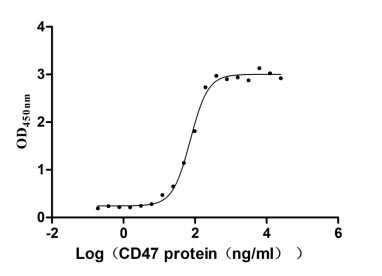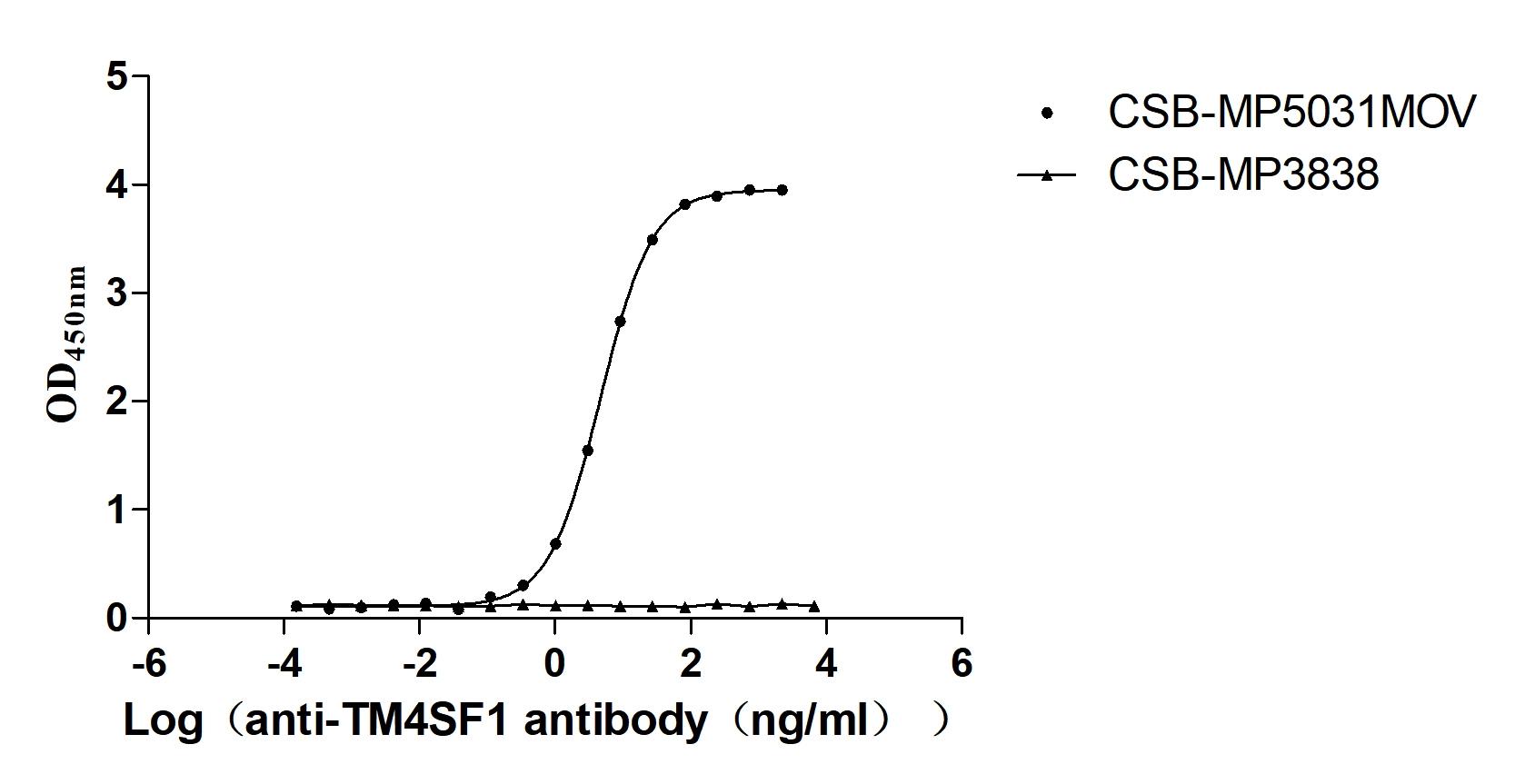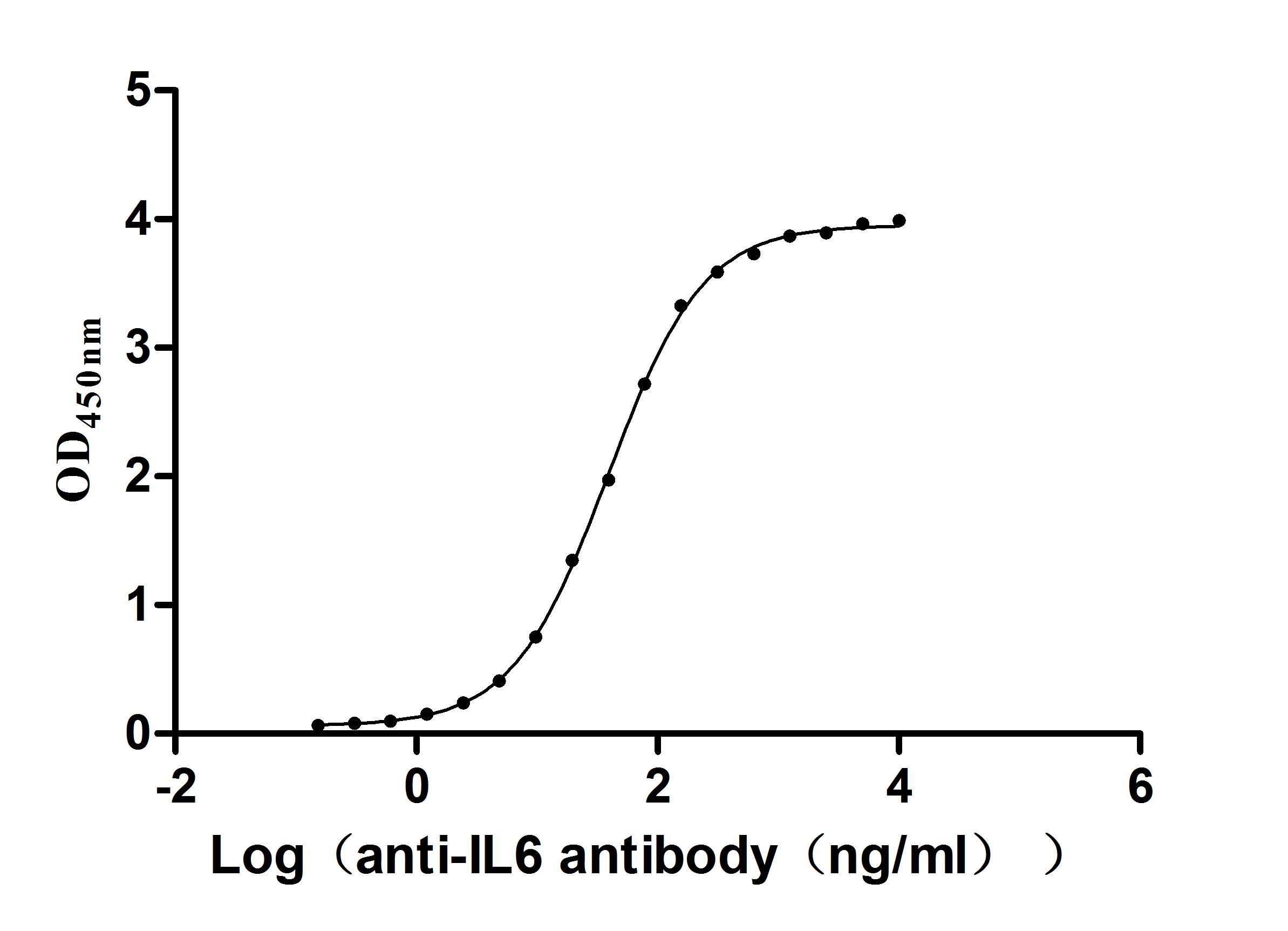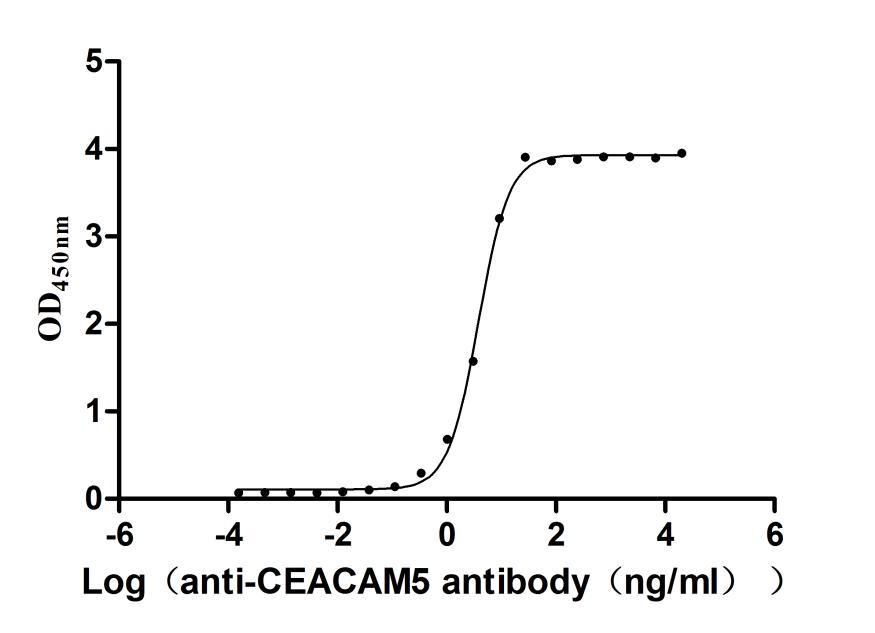Recombinant Human Nuclear receptor subfamily 1 group I member 3 (NR1I3), partial
-
中文名称:人NR1I3重组蛋白
-
货号:CSB-EP622930HU
-
规格:¥1344
-
图片:
-
其他:
产品详情
-
纯度:Greater than 90% as determined by SDS-PAGE.
-
基因名:NR1I3
-
Uniprot No.:
-
别名:CAR; CAR BETA; CAR1; CARA; Constitutive activator of retinoid response; constitutive active receptor; Constitutive active response; constitutive androstane nuclear receptor variant 2; constitutive androstane nuclear receptor variant 3; constitutive androstane nuclear receptor variant 4; constitutive androstane nuclear receptor variant 5; Constitutive androstane receptor; MB67; MGC97144; NR1I3; NR1I3_HUMAN; Nuclear receptor subfamily 1 group I member 3; orphan nuclear hormone receptor; Orphan nuclear receptor MB67; Orphan nuclear receptor NR1I3
-
种属:Homo sapiens (Human)
-
蛋白长度:Partial
-
来源:E.coli
-
分子量:55.7kDa
-
表达区域:2-351aa
-
氨基酸序列ASREDELRNCVVCGDQATGYHFNALTCEGCKGFFRRTVSKSIGPTCPFAGSCEVSKTQRRHCPACRLQKCLDAGMRKDMILSAEALALRRAKQAQRRAQQTPVQLSKEQEELIRTLLGAHTRHMGTMFEQFVQFRPPAHLFIHHQPLPTLAPVLPLVTHFADINTFMVLQVIKFTKDLPVFRSLPIEDQISLLKGAAVEICHIVLNTTFCLQTQNFLCGPLRYTIEDGARVSPTVGFQVEFLELLFHFHGTLRKLQLQEPEYVLLAAMALFSPDRPGVTQRDEIDQLQEEMALTLQSYIKGQQRRPRDRFLYAKLLGLLAELRSINEAYGYQIQHIQGLSAMMPLLQEIC
Note: The complete sequence including tag sequence, target protein sequence and linker sequence could be provided upon request. -
蛋白标签:N-terminal 6xHis-SUMO-tagged
-
产品提供形式:Liquid or Lyophilized powder
Note: We will preferentially ship the format that we have in stock, however, if you have any special requirement for the format, please remark your requirement when placing the order, we will prepare according to your demand. -
缓冲液:Tris-based buffer,50% glycerol
-
储存条件:Store at -20°C/-80°C upon receipt, aliquoting is necessary for mutiple use. Avoid repeated freeze-thaw cycles.
-
保质期:The shelf life is related to many factors, storage state, buffer ingredients, storage temperature and the stability of the protein itself.
Generally, the shelf life of liquid form is 6 months at -20°C/-80°C. The shelf life of lyophilized form is 12 months at -20°C/-80°C. -
货期:Basically, we can dispatch the products out in 1-3 working days after receiving your orders. Delivery time may differ from different purchasing way or location, please kindly consult your local distributors for specific delivery time.Note: All of our proteins are default shipped with normal blue ice packs, if you request to ship with dry ice, please communicate with us in advance and extra fees will be charged.
-
注意事项:Repeated freezing and thawing is not recommended. Store working aliquots at 4°C for up to one week.
-
Datasheet & COA:Please contact us to get it.
相关产品
靶点详情
-
功能:Binds and transactivates the retinoic acid response elements that control expression of the retinoic acid receptor beta 2 and alcohol dehydrogenase 3 genes. Transactivates both the phenobarbital responsive element module of the human CYP2B6 gene and the CYP3A4 xenobiotic response element.
-
基因功能参考文献:
- Expression of microRNA potentially regulated by AhR and CAR in malignant tumors of the endometrium has been reported. PMID: 30225717
- Phosphomimetic substitution of Thr-38 with Asp increased co-immunoprecipitation of the CAR DNA Binding Domain with CAR Ligand Binding Domain in Huh-7 cells. The underlying molecular mechanism that regulates CAR activation is its homodimer-monomer-heterodimer conversion; the monomer and homodimer are phosphorylated at Thr-38 and inactive. PMID: 29133527
- Results suggest that TRIM24 is a novel coactivator of the CAR that is involved in cell- and/or promoter- selective transactivation. PMID: 29101097
- An overview of NR1I2 and NR1I3 pharmacogenetic studies in various therapeutic fields. PMID: 29199543
- replication confirmed at genome-wide significance the association of loci at FOXE1 with hypothyroidism, and PDE8B, CAPZB and PDE10A with serum TSH. A total of 12 SNPs seemed to explain nearly 7% of the serum TSH variation PMID: 28777242
- Dual ligands of CAR/PXR show distinct gene regulation patterns by regulating cross-talk between CAR and PXR. PMID: 27197997
- Data suggest both PXR and CAR are expressed in testis/Sertoli cells; exposure of Sertoli cells (in vitro model of blood-testis barrier) to PXR or CAR ligands (including antiretroviral drugs) up-regulates expression of Pgp/ABCB1, BCRP, and MRP4. (PXR = pregnane X receptor; CAR = constitutive androstane receptor; Pgp/ABCB1 = P-glycoprotein ABCB1; BCRP = breast cancer resistance protein; MRP4 =multidrug resistance protein 4) PMID: 28970358
- Genome-wide comparison of the inducible transcriptomes of nuclear receptors CAR, PXR and PPARalpha in primary human hepatocytes has been presented. PMID: 26994748
- These data provide new insights into the regulation by CAR of glycolytic and lipogenic genes and on pathogenesis of steatosis PMID: 27180240
- Integrative analysis of four RNA-Seq datasets and differential expression revealed for the first time, splicing alterations of SLC39A14 and NR1I3 in hepatocellular carcinoma. PMID: 26711644
- These results reveal both novel and known targets of hCAR and support the role of hCAR in maintaining the homeostasis of metabolism and cell proliferation in the liver. PMID: 26275810
- The homozygous variant genotype of MPJ6_1I3008 is associated with a significant reduced risk of neonatal hyperbilirubinemia in females. PMID: 26188155
- Around 42.5% of the overall interindividual variability in warfarin dose requirements was explained : VKORC1 genotype accounted for 29.6%, CYP2C9 genotype for 4.3%, age for 3.6%, the CYP4F2 genotype for 3.3%, and CAR/HNF4alpha (rs2501873/rs3212198) for 1.7% PMID: 25356900
- It is suggested that the functions of PXR, CAR and AhR may be closely implicated in the pathogeneses of metabolic vascular diseases, such as hyperlipidemia, atherogenesis, and hypertension. PMID: 24859622
- Suggest that PXR and CAR double humanized mice are more sensitive rifampcin induction of cytochrome P450 and UDP-glucuronosyltransferases. PMID: 25835148
- PRMT5 enhances transcriptional activity of constitutive androstane receptor.PRMT5 is a gene-selective co-activator for CAR. PMID: 25721668
- The nuclear receptor constitutive androstane receptor/NR1I3 enhances the profibrotic effects of transforming growth factor beta and contributes to the development of experimental dermal fibrosis. PMID: 25155144
- Donor CYP3A5, NR1I3 gene polymorphisms. PMID: 24351870
- ubiquitin-proteasomal regulation of CCRP and HSP70 are important contributors to the regulation of cytoplasmic CAR levels, and hence the ability of CAR to respond to PB or PB-like inducers PMID: 24789201
- The polymorphisms investigated in PPARA (rs1800206), RXRA (rs11381416), and NR1I2 (rs1523130) did not influence the lipid-lowering efficacy and safety of statin and our results show the possible influence of NR1I3 genetic variant on the safety of statin. PMID: 24232815
- miR-137 is a crucial regulator of cancer response to doxorubicin treatment PMID: 23934188
- The CAR variant, which results in a poor metabolizer phenotype, could account for a higher degree of external genitalia virilization in 21OHD females. PMID: 22978668
- Gadd45B protects the liver through two entirely different processes: binding MKK7 to block damaging signal transduction or binding CAR to coactivate anabolic transcription. (Review) PMID: 24104474
- Activated p38 MAPK is required for CAR to selectively activate a set of genes that encode drug-metabolizing enzymes. PMID: 23539296
- Common genetic variants in the xenobiotic transport and metabolism regulator genes PXR and CAR do not have a significant association with multiple myeloma risk. PMID: 23303387
- CYP2B6 516G>T (P < 0.0001) and CAR rs2307424 C>T (P = 0.002) were significantly related to efavirenz plasma concentrations. PMID: 23172109
- Constitutive androstane receptor-mediated enzyme induction in the liver depends on the presence of beta-catenin at the time of xenobiotic treatment. PMID: 23578392
- Report CAR expression in human parotid glands. PMID: 23614276
- Polymorphisms in the RXRA and NR1I3 genes influence lipid profile in a Southern Brazilian population. PMID: 23079705
- DAX-1 as a novel and potent constitutive androstane receptor (CAR) corepressor and suggest that DAX-1 functions as a coordinate hepatic regulator of CAR's biological function. PMID: 22896671
- DP97 was found to be a gene (or promoter)-selective co-activator for hCAR PMID: 22910411
- phenobarbital-mediated down-regulation of miR-122 is an early and important event in the AMPK-dependent CAR activation and transactivation of its target genes PMID: 22815988
- In severe intrahepatic cholestasis of pregnancy the CAR expression in placenta syncytiotrophoblastic cells increased appreciably, which may be involved in the maintenance of placenta barrier function and protection. PMID: 21733368
- CAR transactivates ABCG2 through the DR5 motif located in its distal promoter in hepatocytes and the motif prefers CAR to pregnane X receptor. PMID: 22093699
- activated ERK1/2 interacts with CAR and represses dephosphorylation of Thr-38, providing a cell signal-regulated mechanism for CAR activation. PMID: 21873423
- CAR mRNA levels were unchanged while protein levels were markedly induced in obstructive cholestasis as compared with the controls. PMID: 21359593
- These data indicate that genetic variability in CYP2B6 and constitutive androstane receptor contributes to early treatment discontinuation for efavirenz-based antiretroviral regimens PMID: 21715435
- These findings provide the first evidence for P-glycoprotein regulation by pregnane X receptor and constitutive androstane receptor at the human blood brain barrier. PMID: 21517853
- results suggest that HNF4alpha plays an important role in the constitutive expression of hepatic UGT2B7, and CAR acts as a negative regulator by interfering with HNF4alpha binding activity PMID: 21415305
- constitutive androstane receptor (hCAR) mediated the CYP2B6 induction by cigarette smoke extract in Hep2G cells; data suggest that smoking up-regulates CYP2B6 through hCAR in vivo PMID: 20966044
- FXR activation in obstructive cholestasis might worsen liver injury by hijacking a protective mechanism regulated by CAR and provides a new molecular explanation to the pathophysiology of cholestasis. PMID: 21296199
- CCAAT/enhancer-binding protein alpha (C/EBPalpha) and hepatocyte nuclear factor 4alpha (HNF4alpha) synergistically cooperate with constitutive androstane receptor to transactivate the human cytochrome P450 2B6 (CYP2B6) gene PMID: 20622021
- Four haplotypes were determined for CAR single nucleotide polymorphisms. PMID: 20218903
- Data observed that OSM positively augmented the CAR and UGT1A1 expressions and CAR-mediated signaling in vivo and in vitro, through cross talk between the nuclear CAR receptor and the plasma membrane OSM receptor, via the MAPK cascade. PMID: 20197307
- Results characterize the conserved threonine 38 of human constitutive active/androstane receptor (CAR) as the primary residue that regulates nuclear translocation and activation of CAR. PMID: 19858220
- CAR antagonizes ER-mediated transcriptional activity by squelching limiting amounts of p160 coactivators, such as SRC-1 and GRIP-1. PMID: 12114525
- Transcriptional regulation of the human CYP3A4 gene by the constitutive androstane receptor. PMID: 12130689
- Regulation of human CYP2C9 by the constitutive androstane receptor: discovery of a new distal binding site. PMID: 12181452
- identified as a key regulator of acetaminophen metabolism and hepatotoxicity PMID: 12376703
- Substantial interindividual differences exist in hepatic constitutive androstane receptor expression; a 240-fold interindividual variability in hepatic mRNA levels has been detected. PMID: 12485946
显示更多
收起更多
-
亚细胞定位:Nucleus. Cytoplasm. Cytoplasm, cytoskeleton.
-
蛋白家族:Nuclear hormone receptor family, NR1 subfamily
-
组织特异性:Predominantly expressed in liver.
-
数据库链接:
HGNC: 7969
OMIM: 603881
KEGG: hsa:9970
STRING: 9606.ENSP00000356958
UniGene: Hs.349642
Most popular with customers
-
Recombinant Human Leukocyte surface antigen CD47 (CD47), partial (Active)
Express system: Mammalian cell
Species: Homo sapiens (Human)
-
Recombinant Human IL12B&IL12A Heterodimer Protein (Active)
Express system: Mammalian cell
Species: Homo sapiens (Human)
-
Recombinant Rat Gastric inhibitory polypeptide receptor (Gipr), partial (Active)
Express system: Mammalian cell
Species: Rattus norvegicus (Rat)
-
Recombinant Macaca fascicularis Transmembrane 4 L6 family member 1 (TM4SF1)-VLPs (Active)
Express system: Mammalian cell
Species: Macaca fascicularis (Crab-eating macaque) (Cynomolgus monkey)
-
-
Express system: Mammalian cell
Species: Macaca mulatta (Rhesus macaque)
-
Recombinant Human C-C chemokine receptor type 5 (CCR5)-VLPs (Active)
Express system: Mammalian cell
Species: Homo sapiens (Human)




















